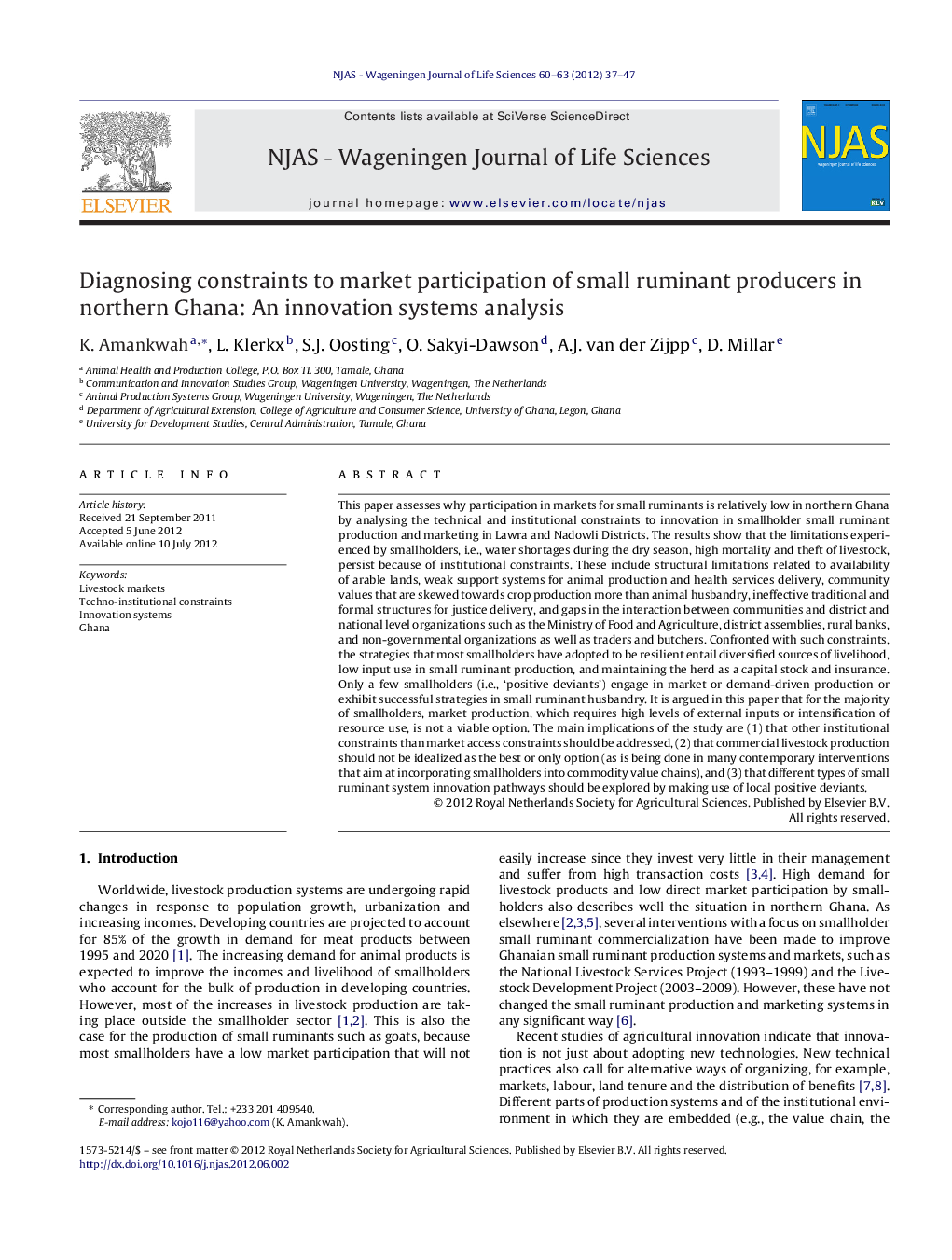| کد مقاله | کد نشریه | سال انتشار | مقاله انگلیسی | نسخه تمام متن |
|---|---|---|---|---|
| 4501331 | 1624070 | 2012 | 11 صفحه PDF | دانلود رایگان |

This paper assesses why participation in markets for small ruminants is relatively low in northern Ghana by analysing the technical and institutional constraints to innovation in smallholder small ruminant production and marketing in Lawra and Nadowli Districts. The results show that the limitations experienced by smallholders, i.e., water shortages during the dry season, high mortality and theft of livestock, persist because of institutional constraints. These include structural limitations related to availability of arable lands, weak support systems for animal production and health services delivery, community values that are skewed towards crop production more than animal husbandry, ineffective traditional and formal structures for justice delivery, and gaps in the interaction between communities and district and national level organizations such as the Ministry of Food and Agriculture, district assemblies, rural banks, and non-governmental organizations as well as traders and butchers. Confronted with such constraints, the strategies that most smallholders have adopted to be resilient entail diversified sources of livelihood, low input use in small ruminant production, and maintaining the herd as a capital stock and insurance. Only a few smallholders (i.e., ‘positive deviants’) engage in market or demand-driven production or exhibit successful strategies in small ruminant husbandry. It is argued in this paper that for the majority of smallholders, market production, which requires high levels of external inputs or intensification of resource use, is not a viable option. The main implications of the study are (1) that other institutional constraints than market access constraints should be addressed, (2) that commercial livestock production should not be idealized as the best or only option (as is being done in many contemporary interventions that aim at incorporating smallholders into commodity value chains), and (3) that different types of small ruminant system innovation pathways should be explored by making use of local positive deviants.
Journal: NJAS - Wageningen Journal of Life Sciences - Volumes 60–63, December 2012, Pages 37–47